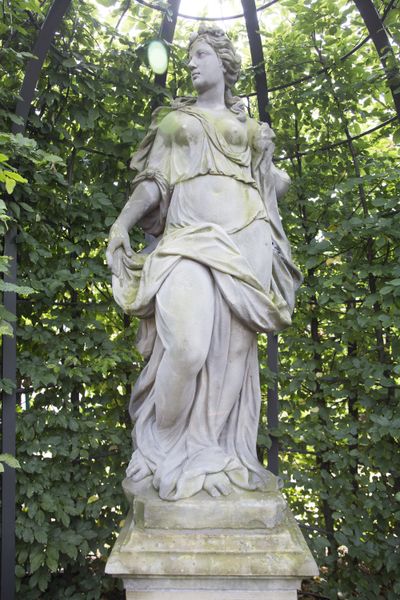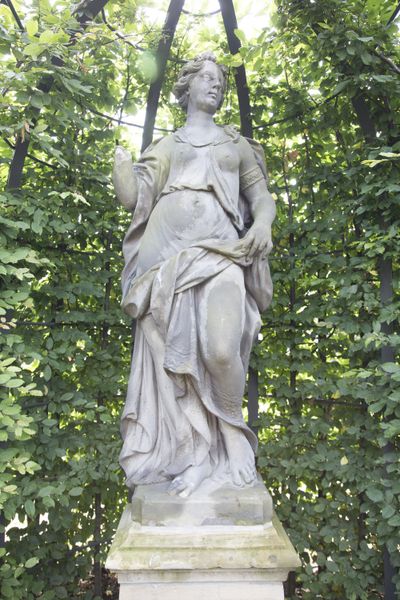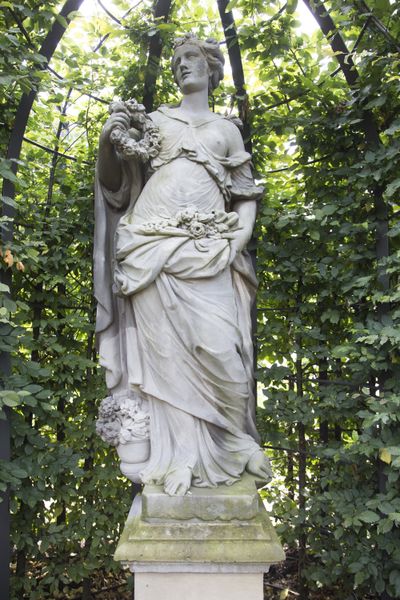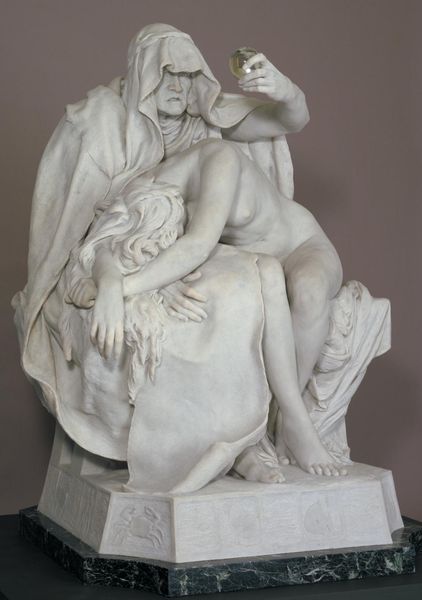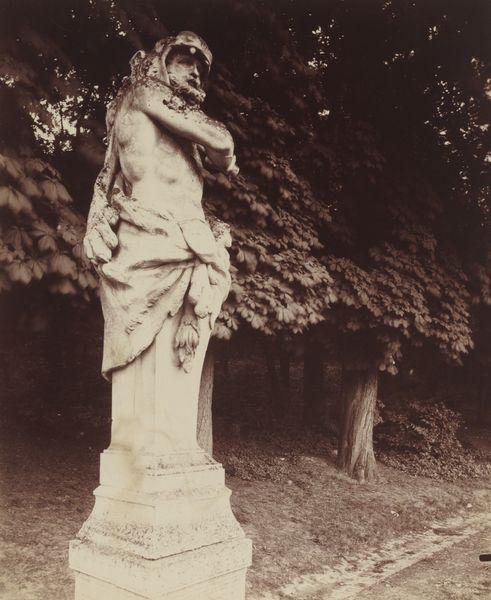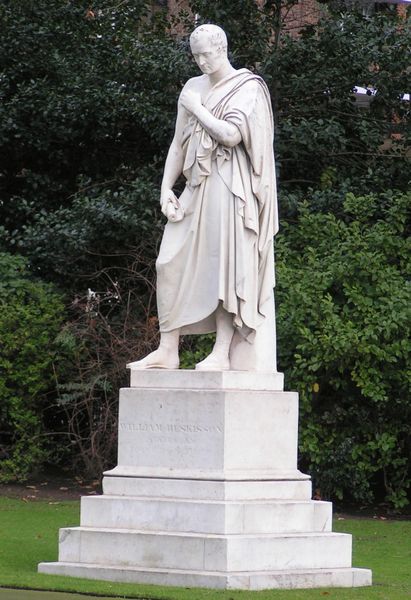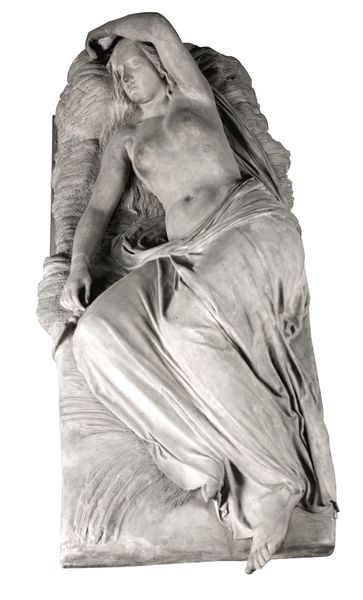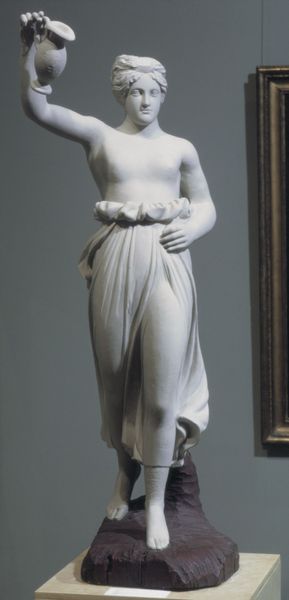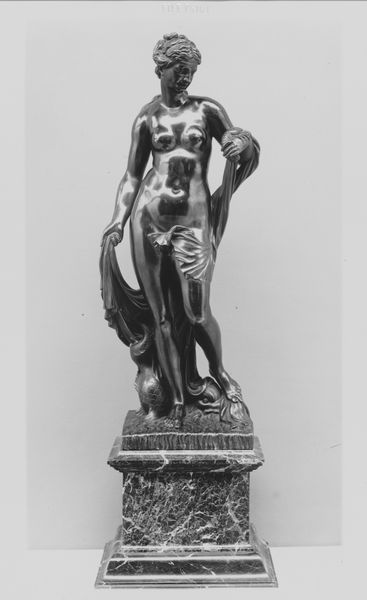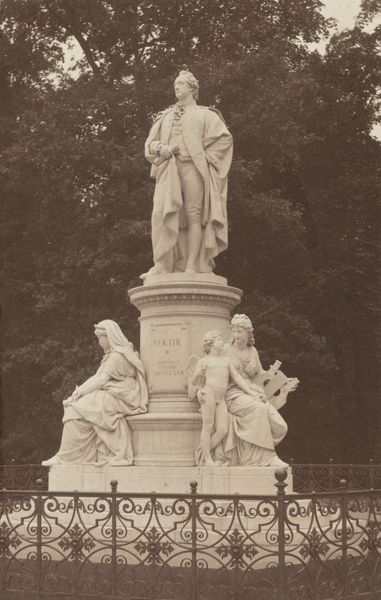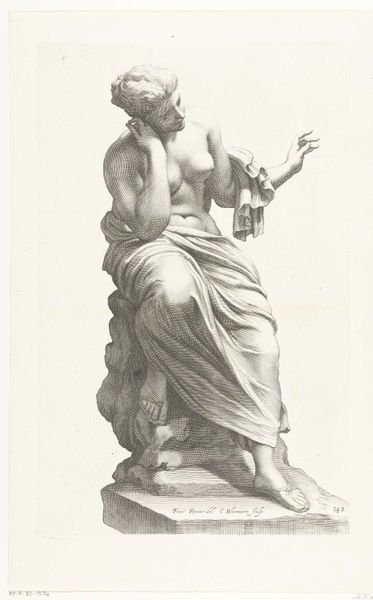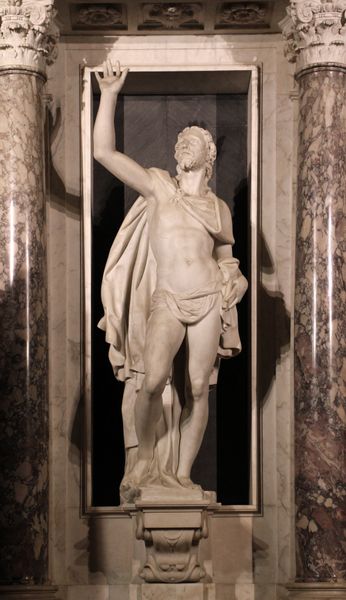
sculpture, marble
#
baroque
#
sculpture
#
classical-realism
#
figuration
#
sculpture
#
history-painting
#
marble
Dimensions: height 170 cm, width 48 cm, depth 47 cm, height 110 cm, weight 395 kg
Copyright: Rijks Museum: Open Domain
This is Jan van Logteren’s statue of Apollo, made of sandstone. Here, Apollo stands in classical nudity, draped with cloth. His laurel wreath signifies triumph and status, yet it also embodies the cyclical regeneration of nature. The motifs of Apollo, such as the lyre or bow, were not invented in a vacuum. One finds resonance in earlier, Near Eastern iconography, in which divinities hold weapons or musical instruments that represent their power. These symbols recur across time, evolving but never truly disappearing from our collective consciousness. Consider, for example, the laurel wreath itself. Once a symbol of victory in ancient Greece and Rome, it experienced various resurgences during the Renaissance and the Enlightenment. In Logteren’s statue, it serves not merely as an emblem of Apollo’s triumphs, but as a bridge connecting us to the past, stirring deep, perhaps subconscious, echoes of history and myth. The very act of viewing this statue engages our memory, intertwining personal experience with the broader cultural narrative. And so, the laurel wreath continues its cyclical journey, ever evolving, yet forever linked to its origins.
Comments
rijksmuseum about 2 years ago
⋮
Jan van Logteren learned his trade as a sculptor under his father Ignatius and became a popular artist. Here Apollo is identified by his laurel crown. The sun god once stood alongside a figure of Aurora, the dawn goddess, in the garden of a house on Amsterdam’s Nieuwe Herengracht.
Join the conversation
Join millions of artists and users on Artera today and experience the ultimate creative platform.
